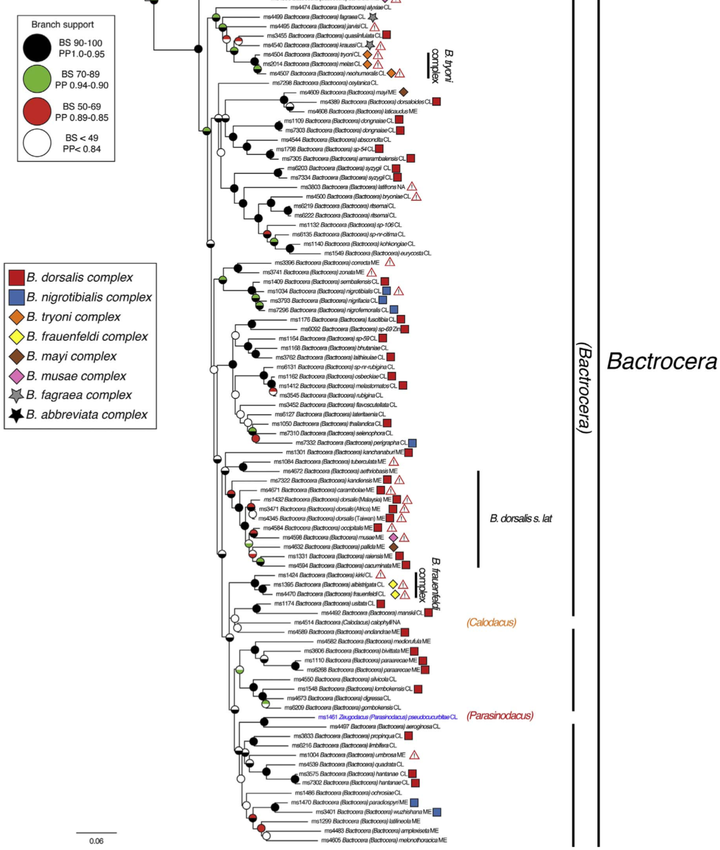Incongruence between molecules and morphology: a seven-gene phylogeny of Dacini fruit flies paves the way for reclassification (Diptera: Tephritidae)
 Image credit: M San Jose
Image credit: M San JoseAbstract
Molecular and morphological research often suggest conflicting results. Selective pressure on certain morphologies can confound understanding of evolutionary relationships. Dacini is one of the most diverse tribes of tephritid flies and contains many economically important pest species. Their black and yellow patterned body markings are presumed to act as wasp mimicry, and the characters separating species and groups are limited and in some cases phenotypically plastic. The traditional taxonomy of the tribe is controversial because groupings are based on unique combinations of morphological characters without the use of cladistic methods, though recent phylogenetic and taxonomic analyses have resulted in significant changes to their taxonomy. The monophyly of the three largest genera in the tribe has been tested with only small numbers of representatives per genus and a limited number of genes. To further understand the taxonomy and evolution of Dacini we sequenced seven genes from 167 Dacini species and five dipteran outgroups to construct a robust phylogeny and test phylogenetic relationships between genera, subgenera, and species complexes. Our phylogeny confirms the monophyly of Dacus, Bactrocera, and Zeugodacus. However, most groups below the genus level are not monophyletic, and only through further revision will we be able to understand their evolution and clarify the taxonomy within this tribe.